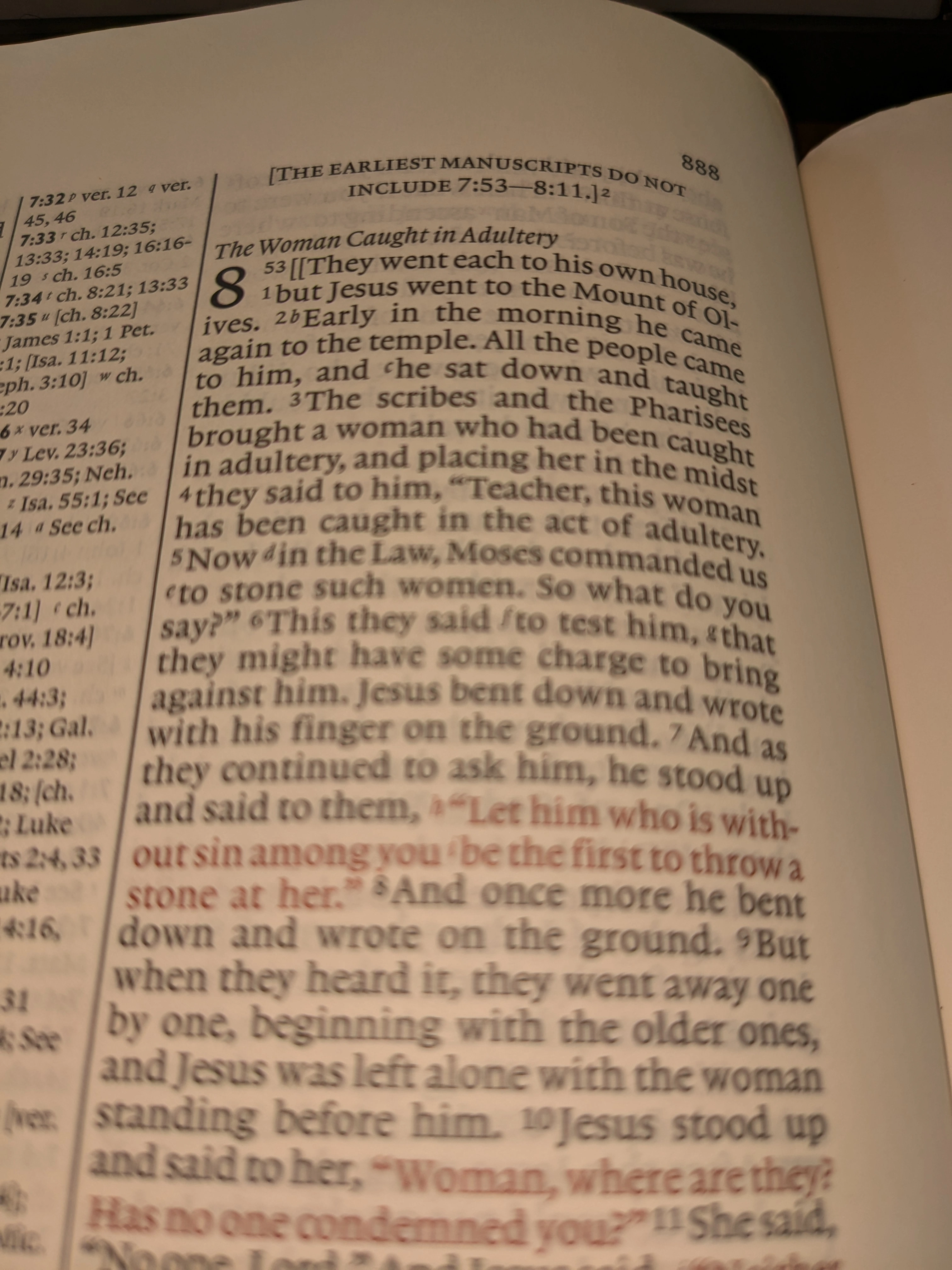
One of the most famously disputed passages in the New Testament is John 7:53-8:11, the Pericope Adulterae. Ultimately, whether we believe this passage ought to be included has to come down to a variety of factors, but as I’ve reflected on the text, it strikes me that its inclusion or exclusion has a major impact on the literary flow of the text. I’m almost certain there is scholarly discussion of the Pericope’s literary place, but I have not interacted with any of it. This is merely a reflection based on my own reading.
What Exclusion Means
If the Pericope is excluded, then all of chapter eight happens on the last day of the Feast of Booths. At the beginning of chapter 7, we learn that all of this is taking place at the Feast of Booths. After Jesus preaches at the Feast, the Pharisees are trying to arrest Jesus, but the officers chicken out and refuse to do it, presumably, because they think he might be onto something important. At the end of chapter 7, the Pharisees are talking amongst themselves, and in John 8:12, Jesus is interrupting them with another “I am” statement. This makes John 7:37-8:59 one long interaction; the referent for “them” in 8:12 is this same group of Pharisees. It ends with the unbelieving Jews trying to stone Jesus.
There’s a note in 8:20 that Jesus was not arrested, just as he wasn’t arrested at the end of chapter 7. This seems redundant to me. If chapters 7-8 are a single literary unit, it seems odd to repeat what we already know to be true–that the officers refuse to arrest Jesus.
This reading, from a purely literary perspective, seems labored. Of course, according to the rules of textual criticism, the more difficult reading is always preferred, but textual criticism is not a science. In sum, I think if we skip the Pericope, we end up with a text that seems incomplete. In other words, it feels as if something should go between 7:52 and 8:12.
What Inclusion Means
If we include the Pericope, John 7:53-8:1 mark all of chapter 8 as a separate section from chapter 7. Chapter 7 ends with a private conversation between the officers and the Pharisees before they go home. This marks the end of the Feast of Booths as it happens on the last day. There is no time indication at the beginning of chapter 8, but at the very least, we know that this encounter with the adulterous woman happens after the Feast of Weeks has concluded.
Therefore, chapter 7 is a complete story. Jesus goes and preaches at the Feast of Booths, and it ends with the incredulous officers and Pharisees struggling to find a solution. Their plot is foiled, and they’re divided about what to do next. The climax of the Feast of Booths is Jesus’ command to believe in him, and the story closes. It would be very odd, then, if the story just kept going after a clear denouement, but it makes perfect sense if the Pharisees have gone away and hatched a new plan to introduce a new conflict.
There’s also a literary benefit to the inclusion of the text. Jesus’ comments throughout John 8 are all about authority, and the Pericope Adulterae is a demonstration of that authority. This provides a thematic unity that is confused by the Pericope’s exclusion. This thematic unity is bolstered by the fact that John 8 both begins and ends with stoning. We might even say that Jesus is standing in the place of this condemned woman. According to the law of Moses, she should be stoned, but he stops the punishment and speaks in a way that brings about his own judgment even though he is himself righteous.
So if we’re merely looking at the literary details, it seems that the Pericope Adulterae actually makes more sense of the text. It creates two unique stories, each with their own particular thematic impact.
Bible Study